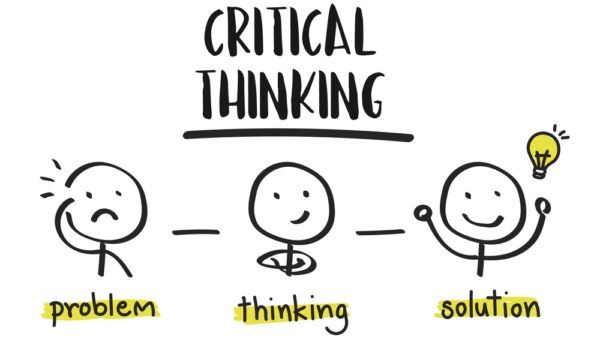Faced with a flood of information, we are challenged to evaluate and make sense of what we see and read, especially in the digital world. Parents, students, educators, and employers all have a stake in meeting this challenge through the use of critical thinking skills. It is vital that people develop the ability to analyze the information they encounter online and assess whether they can trust the sources behind the content.
But how can these important skills be taught and strengthened? Based on my own experiences teaching both high school and college students, here are four suggestions on how critical thinking skills can be taught in the digital age:
1. Explain the Benefits of Critical Thinking
Educators and parents should begin by highlighting the positive impact of critical thinking. These are skills people use all the time to help make important personal decisions. Critical thinking helps us make decisions about our education and career paths, to consider our short- and long-term goals and how we wish to go about achieving them. And it can improve our civic choices, helping us unpack information about ballot issues and decide which candidate to vote for.
Strong critical thinking skills also make us more informed consumers of online content. Anybody with an internet connection can express his or her perspectives by commenting on a news story, “liking” a photograph posted to a social media site or sharing something they’ve found online.
By using critical thinking, we can break down arguments and claims found online and reject the ones that do not stand up to scrutiny.
2. Break Down the Critical Thinking Process
To make the critical thinking process seem less intimidating, educators and parents can break it down into four simple steps: identify the issue, identify the evidence, follow and vet the evidence and reach and communicate a decision. Even the most complex problems can be solved with a combination of good research and common sense.
For example, imagine that you encounter a Facebook post by a celebrity that decries the lack of gun control reform in the wake of a series of deadly school shootings. Before deciding whether to “like” or share this post, one can use the critical thinking process to analyze the validity of the celebrity’s argument.
Once you have identified the issue (lack of gun control reform), you still need to consider any evidence that would support the celebrity’s viewpoint and then follow that evidence to evaluate its credibility before reaching a conclusion. The response to the original post—“liking” it, sharing it or ignoring it—should come as a result of critical thinking.
(Next page: 2 more ways to update critical thinking skills for a digital world)
3. Consider the Ethical Obligations and Responsibilities of Critical Thinkers
Educators and parents should also emphasize how critical thinking skills can help young people engage in public discourse and reason in good faith. At a time when the internet is flooded with biased content and fake news, critical thinking skills are essential in helping us determine what to believe—a judgment based not only on facts but also on ethical principles and what we believe to be right and wrong.
Critical thinking enables us to make responsible decisions about the information we post online. When we comment on a hot-button issue, are we keeping our biases in check? Are any persuasive tactics coming from an honest and sincere place? With critical thinking, we can recognize when people, including ourselves, are not reasoning in good faith.
4. Make critical thinking fun
Finally, the key to engaging young people and students in any endeavor is to make it fun and appealing. While critical thinking is a systematic process, it also invites creativity and curiosity. Whether students are writing an essay, composing a piece of music, inventing a new piece of machinery, or designing a website, they need to know how to balance technical skill with imaginative thought.
Encourage students to test out their knowledge in real-world situations. Give them opportunities to interact with people who do not necessarily share their backgrounds or viewpoints. And teach them to always dig deeper and search for answers beneath the surface. The result will be a more well-rounded generation of critical thinkers who can confidently navigate the digital space and differentiate between what is real and fake.
It is important for educators and parents to understand how their children are developing and using these important skills. Conversations around what is happening in the home, the classroom, and the community provide opportunities to hear how young people are putting these skills to work and how well they understand why critical thinking is so important.
- 6 recommendations for AI in classrooms - March 7, 2025
- What keeps boys from reading and girls from STEM? Stereotypes - March 7, 2025
- 10 things AI still struggles with in education–and beyond - March 6, 2025

